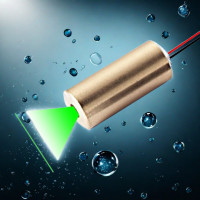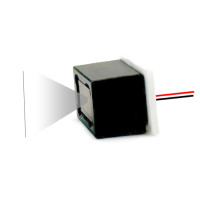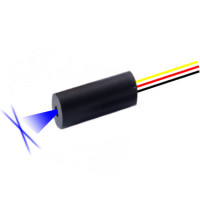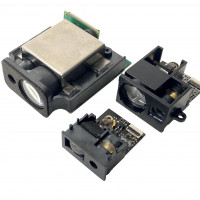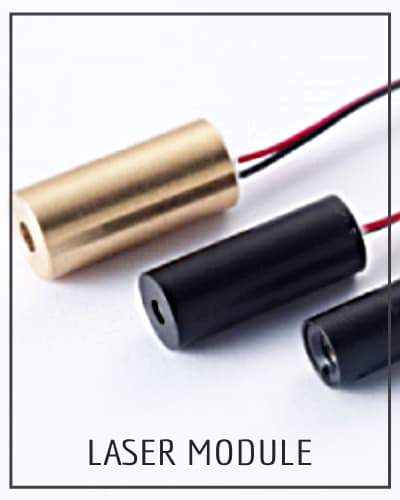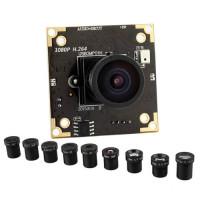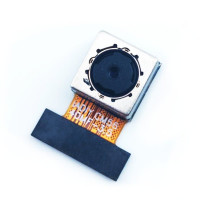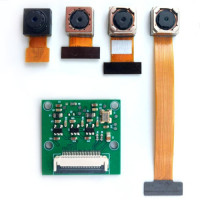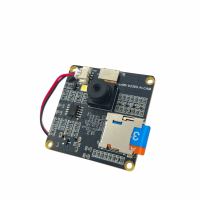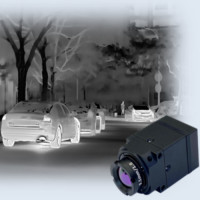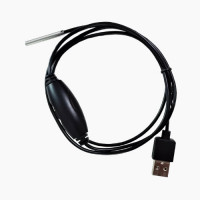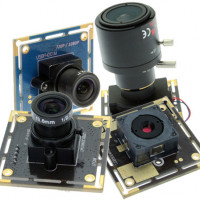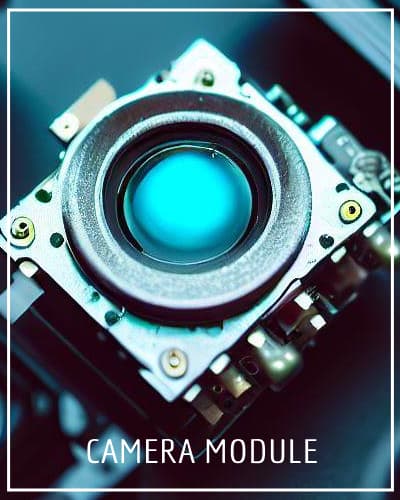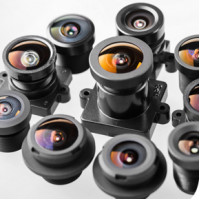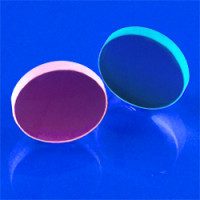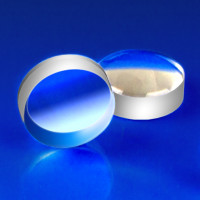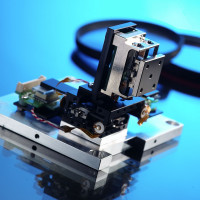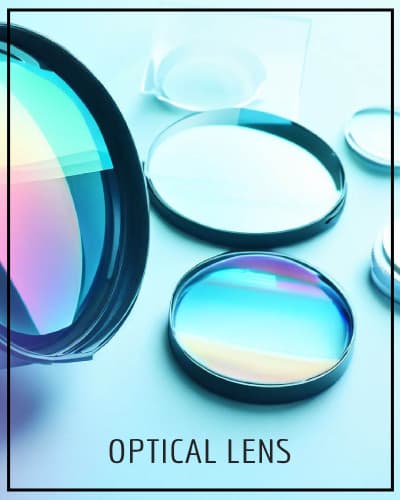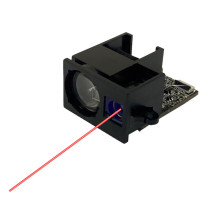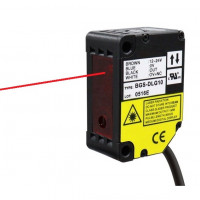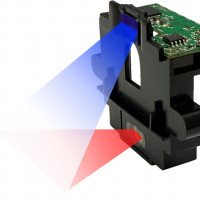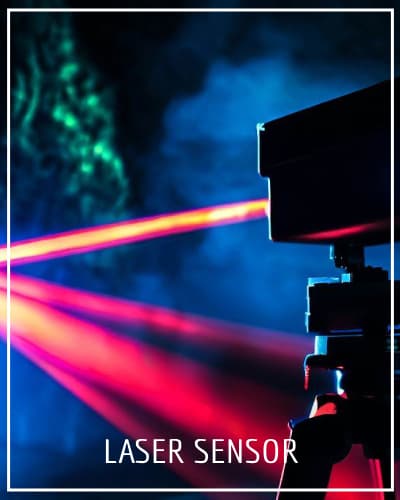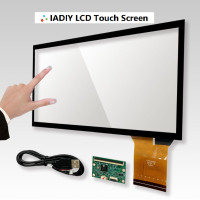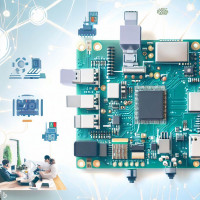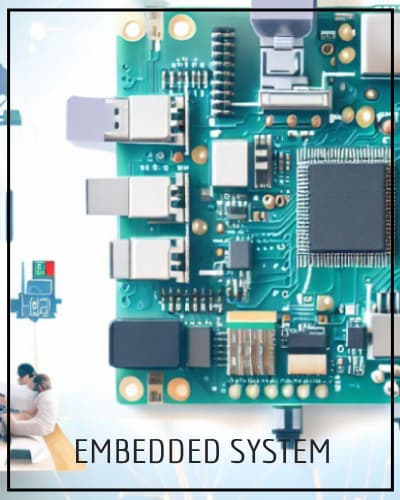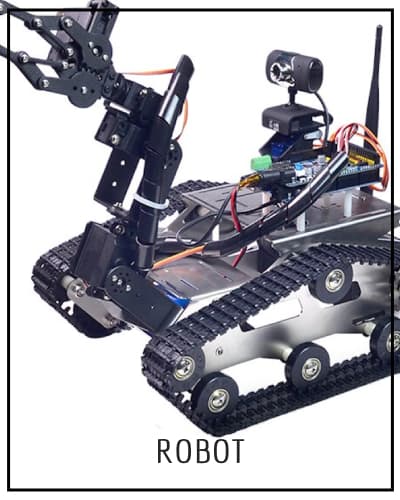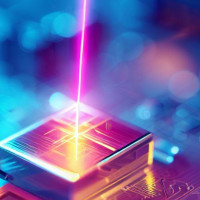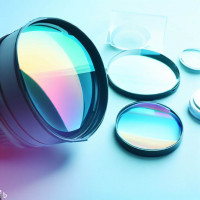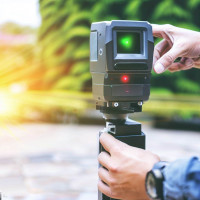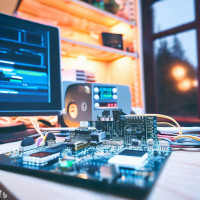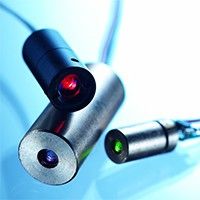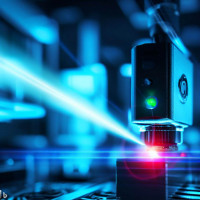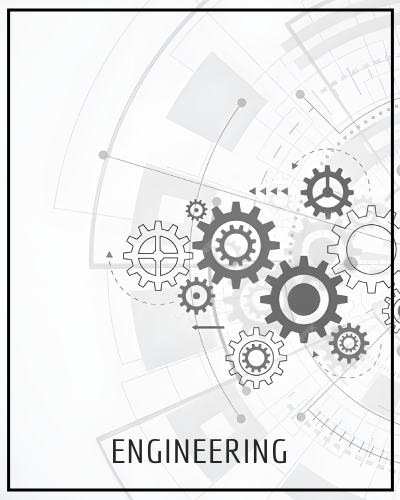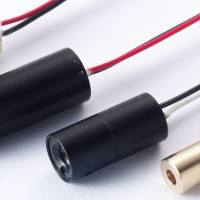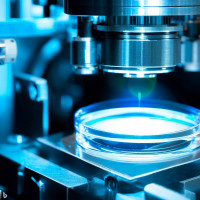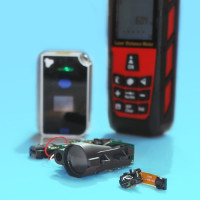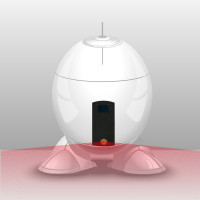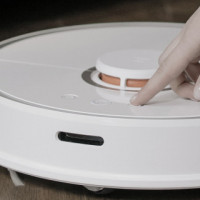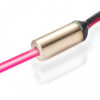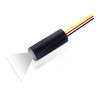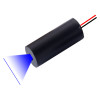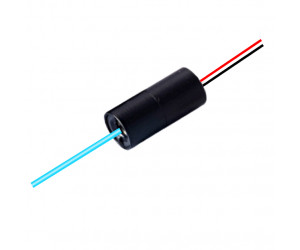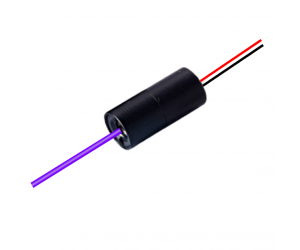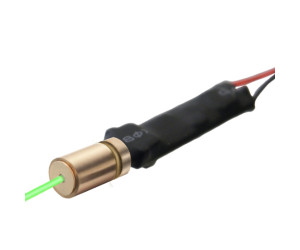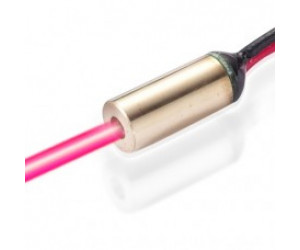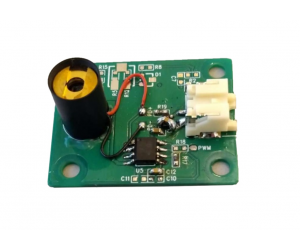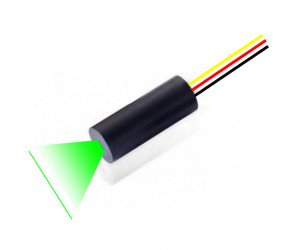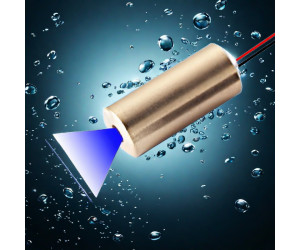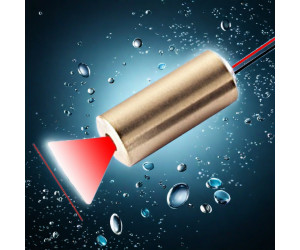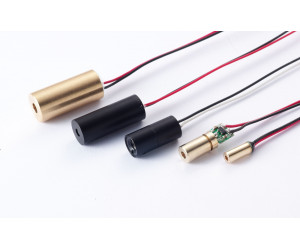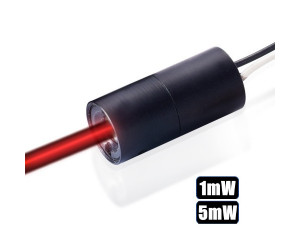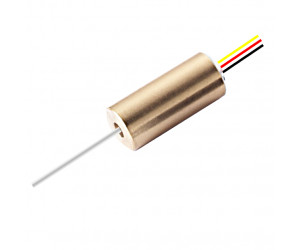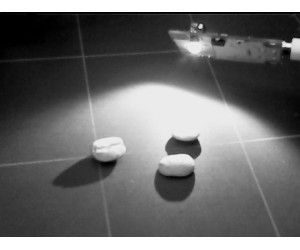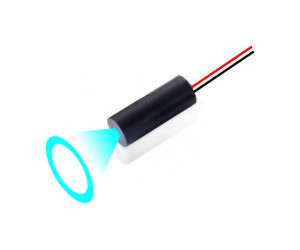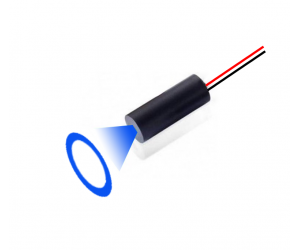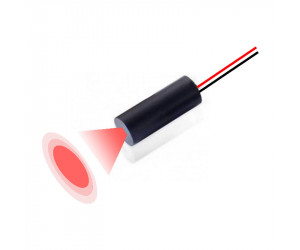雷射模組 產品編碼表:RGB可見光雷射模組、紅外線雷射模組、雷射打線模組、一字線雷射、十字線雷射
| 產品代號 | 雷射模組直徑(mm) | 顏色, λ(nm) | 樣式 | 雷射功率(mw) | 雷射圖形 |
| LM: | 4: 4mm | B:藍光,405:405nm | S:標準 | <0.39mW,Class I | D: 點狀, R: 圓點 |
| Laser Module | 6: 6mm | G:綠光,520:520nm | H:高規 | 1:<1mW,Class II | L: 一字線, C: 十字線 |
| 雷射模組 | 8: 8mm | R:紅光,635:635nm | M:超穎透鏡 | 10:<10mW | P: 特殊圖案 |
| 9: 9mm | IR:紅外光,940:940nm | 1000:<1000mW |
憑藉在雷射模組和雷射感測器的專業知識與生產經驗,我們推出了RGB可見光雷射模組,IR紅外光雷射模組,雷射二極體模組,一字線雷射模組,均勻線雷射模組,十字線雷射模組等產品,也可以為您客製化雷射模組。
RGB 雷射模組,二極體雷射模組: 405nm, 450nm, 490nm, 520nm, 635nm, 和 650nm 的雷射模組,雷射二極體模組。
IR雷射模組,紅外線雷射模組: 紅外線雷射模組,從780nm, 830nm, 850nm, 940nm, 和 980nm紅外線雷射模組和 IR雷射打線模組。
一字線雷射模組, 十字線雷射模組: 一字線雷射模組從RGB打線雷射模組到紅外線一字線雷射,十字線雷射以及均勻線雷射模組。
其他雷射模組和DOE雷射模組: 除了標準雷射模組以外,我們還有用於雷射感應、高功率雷射頭、紅外線雷射照明和雷射加熱器及VCSEL雷射二極體模組,DOE繞射元件、結構光雷射模組抑或是採用超穎透鏡之客製化雷射模組。您可以至 “客製化雷射光源” 查看介紹和條件選項。有問題請聯繫我們。
TTL 雷射調變: 系統開發人員在執行雷射整合工作時,常常會需要有空間可以彈性調整,例如雷射功率,IADIY TTL 雷射商品讓您可以藉由改變 PWM duty ratio, 10% 到 100%,輕鬆讓您順利找出最適合的雷射輸出功率,TTL 雷射商品已上架販售,歡迎自行選購。
防水雷射模組: 基於各類產品開發時,面臨到的防水規範需求,IEC 於 1976宣告 IEC60529,各類防水能力以 IP code 清楚定義,IADIY 設計了數款符合 IP67 標準型防水雷射模組,歡迎開發人員選購測試產品頁面。
雷射安全性: 為了安全的使用、設計和操作雷射等工具,遵循安全手冊中將大大降低發生事故的風險,尤其是涉及到眼睛安全方面。主要特性和要求由IEC 60825-1 標準規定。更多詳情請查看雷射安全。
RGB 雷射模組,二極體雷射模組: 405nm, 450nm, 490nm, 520nm, 635nm, 和 650nm 的雷射模組,雷射二極體模組。
IR雷射模組,紅外線雷射模組: 紅外線雷射模組,從780nm, 830nm, 850nm, 940nm, 和 980nm紅外線雷射模組和 IR雷射打線模組。
一字線雷射模組, 十字線雷射模組: 一字線雷射模組從RGB打線雷射模組到紅外線一字線雷射,十字線雷射以及均勻線雷射模組。
其他雷射模組和DOE雷射模組: 除了標準雷射模組以外,我們還有用於雷射感應、高功率雷射頭、紅外線雷射照明和雷射加熱器及VCSEL雷射二極體模組,DOE繞射元件、結構光雷射模組抑或是採用超穎透鏡之客製化雷射模組。您可以至 “客製化雷射光源” 查看介紹和條件選項。有問題請聯繫我們。
TTL 雷射調變: 系統開發人員在執行雷射整合工作時,常常會需要有空間可以彈性調整,例如雷射功率,IADIY TTL 雷射商品讓您可以藉由改變 PWM duty ratio, 10% 到 100%,輕鬆讓您順利找出最適合的雷射輸出功率,TTL 雷射商品已上架販售,歡迎自行選購。
防水雷射模組: 基於各類產品開發時,面臨到的防水規範需求,IEC 於 1976宣告 IEC60529,各類防水能力以 IP code 清楚定義,IADIY 設計了數款符合 IP67 標準型防水雷射模組,歡迎開發人員選購測試產品頁面。
雷射安全性: 為了安全的使用、設計和操作雷射等工具,遵循安全手冊中將大大降低發生事故的風險,尤其是涉及到眼睛安全方面。主要特性和要求由IEC 60825-1 標準規定。更多詳情請查看雷射安全。
雷射安全規範簡介
"雷射安全規範"是為了雷射的設計、使用和實施安全考量,以最大限度地減少雷射事故的風險,尤其是涉及眼睛受傷的事故。雷射安全規範現在分為 "Class 1、1M、Class 2、2M、Class 3R(3A)、3B 及 Class 4。在 "美國 USA" 對消費性產品市場,FDA 要求須符合 "Class 1 到 Class 3R(3A, <5mW)" 的雷射功率範圍要求,被認為對消費者是安全的,而 "歐盟 EU" 要求用於消費性市場的雷射產品為 "Class 1, Class 2, Class 1M, Class 2M(<1mW)"。
雷射安全規範主要是依照 CE 的檢測規範標準 "IEC 60825-1 standard" 標準規定的分類級別,以下簡述各級別的主要特徵和要求。此外,Class 2 及更高級別必須具有此處所示的三角形警告標籤,並且在特定情況下需要其他標籤來指示雷射發射、雷射孔徑、皮膚危害和不可見波長。
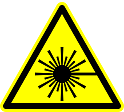
作為專業的雷射模組製造商,IADIY 的標準雷射模組都能滿足雷射安全規範要求,並支援客戶申請相關的雷射安全規範認證。
分類:IEC60825-1 標準
雷射的分類是基於可接受發射限制(AEL)的概念。以下列出 IEC 60825-1 標準規定的分類系統的主要特徵和要求。
Class 1 (輸出功率 <0.39mW)
CLASS 1 雷射產品
Class 1 雷射在所有正常使用條件下都是安全的。為驗證合規性,該標準規定了對應於裸眼的孔徑和距離。例如,具有非常大光束或高度發散光束的高功率雷射可能被歸類為 Class 1,如果通過定義的孔徑的功率小於 Class 1。通常,如果光碟機等裝置完全包含更強大雷射的光束,使得在正常使用下不會有光線逸出,則會被視為 Class 1。
Class 1M (適用於發散雷射,輸出功率 <0.39mW,通過直徑 7mm 孔徑 @ 10cm 距離)
雷射輻射
請勿使用光學儀器直接觀看
CLASS 1M 雷射產品
Class 1M 雷射產生大直徑光束或發散光束。除非使用聚焦或成像光學儀器來縮小光束,否則通常不會超過 Class 1M 雷射的最大許可暴露量(MPE)。如果通過裸眼瞳孔的功率小於 Class 1 的 AEL,則雷射可被歸類為 Class 1M。
Class 2 (輸出功率 <1mW)
Class 2 雷射被認為是安全的,但如果長時間凝視雷射光可能會導致眼睛不適。Class 2 雷射限制為 1 mW 連續波,或如果發射時間少於 0.25 秒則可以更高。
Class 2M (適用於發散雷射,輸出功率 <1mW,通過直徑 7mm 孔徑 @ 10cm 距離)
由於眨眼反射,如果不通過光學儀器觀看,Class 2M 雷射是安全的。與 Class 1M 一樣,這適用於具有大發散度的雷射光束,通過瞳孔的光量不能超過 Class 2 的限制。
Class 3R(3A) (輸出功率 <5mW)
雷射輻射
避免直接眼睛暴露
CLASS 3R 雷射產品
如果小心處理,限制光束觀看,Class 3R 雷射被認為是安全的。使用 Class 3R 雷射可能會超過 MPE,但受傷風險較低。可見連續雷射在 Class 3R 中限制為 5mW。對於其他波長和脈衝雷射,適用其他限制。
Class 3B (輸出功率 <0.5W)
如果眼睛直接暴露,Class 3B 雷射是危險的,但來自紙張或其他啞光表面的漫反射不會造成傷害。連續雷射的 AEL 為 0.5 W。對於 400 到 700 nm 之間的脈衝雷射,限制為 30mJ。Class 3B 雷射必須配備鑰匙開關和安全聯鎖裝置。
Class 4
Class 4 是最高和最危險的雷射等級,包括所有超過 Class 3B AEL 的雷射。Class 4 雷射必須配備鑰匙開關和安全聯鎖裝置。醫療雷射可能具有發散發射,需要注意標稱眼睛危害距離(NOHD)和標稱眼睛危害區域(NOHA)。
參考資料
更多雷射安全介紹:雷射安全
客製化雷射模組:二極體雷射模組、VCSEL雷射、雷射照明、高功率雷射頭
雷射模組指南介紹了IADIY的雷射模組產品線,包括RGB二極體雷射模組、紅外線雷射模組、線性雷射模組,以及客製化二極體雷射模組,方便依據雷射模組特性列表進行搜索和比較。您可以展開雷射模組指南手風琴選單,查看雷射模組列表以及相關的雷射二極體模組介紹和說明。
除了標準雷射二極體模組類型外,我們還提供更多不同波長和功率選項的二極體雷射模組。我們也支援根據您的需求定製雷射模組。請將您的需求發送給我們,或在下方留言。我們將盡快回覆您!

IADIY 提供標準雷射模組,方便在我們的線上商店快速簡便地訂購樣品或小批量。
我們也提供並歡迎訂購任何規格要求的客製化雷射模組。如果您找不到適合您應用的雷射模組,請將您的詢問發送至 sales@iadiy.com,並簡要描述您的需求或應用。我們將在很短的時間內回覆您(通常在兩個工作日內)。
雷射模組介紹
「雷射二極體模組」通常包括一個雷射二極體、一個驅動電路板、一個光學鏡頭(雷射準直鏡頭、雷射線生成器或雷射圖案生成DOE(衍射光學元件))和機械部件。在高功率雷射模組中,還包括一個額外的TEC用於散熱。從雷射二極體發射的雷射光有一個寬發散角,因此大多數應用需要一個雷射準直鏡頭,將雷射光聚焦成一束準直雷射光。對於需要非準直雷射光束的應用,IADIY也設計其他互補光學元件,在準直雷射光束後組裝,以實現所需的圖案。
與單一雷射二極體相比,完整雷射二極體模組的另一個優勢是具有特定的雷射二極體驅動電路。雷射二極體是容易損壞的元件,需要適當的工作電壓和電流供應才能達到穩定的輸出功率,特別是在考慮眼睛安全認證時。
雷射二極體模組結構

- 雷射二極體
- 光學鏡頭
- 雷射驅動電路
- 光學和機械特性
1. 雷射二極體:
-雷射二極體的主要特性:波長、輸出功率、工作溫度
(我們的雷射二極體產品列表在 https://www.iadiy.com/custom-laser-module,雷射二極體的其他特性如發散角、模式和詳細資訊請參考雷射二極體介紹。我們可以提供波長範圍從405nm、450nm藍色雷射模組、520nm綠色雷射模組、635nm、650nm紅色雷射模組到1550nm紅外線雷射模組的二極體雷射模組,雷射模組的驅動功率可以等於或小於其雷射二極體的工作功率(如相應雷射二極體數據表所述)。

2. 光學鏡頭:準直鏡頭 + 其他功能鏡頭(雷射線生成器、雷射圖案生成器或特殊功能光學元件)
以下是我們在開始任何雷射模組生產之前需要達成共識的基本光學規格。
- 光束準直的主要特性:發散角、雷射光斑大小。
- 雷射圖案的選擇:雷射點、雷射線、雷射十字線,或任何通過使用DOE(衍射光學元件)實現的雷射圖案。
雷射準直鏡頭,用於雷射準直光束的雷射準直鏡頭
通常,從雷射二極體發射的雷射光是發散的,而大多數應用需要雷射光束作為直線光束。因此,需要準直鏡頭將發散的雷射光聚焦到一個非常小的發散角,我們稱之為雷射準直。雷射光束發散角、光斑大小,甚至雷射線寬度或DOE雷射圖案的清晰度都取決於雷射準直的性能。準直鏡頭是達到準直光束要求的關鍵。準直鏡頭的選擇可以參考光學鏡頭商店。
雷射線模組 / 雷射線生成器 / 十字線雷射模組特性:
雷射線模組投射一個展開角度的雷射線圖案。雷射線的長度取決於展開角度和距離,距離越遠和展開角度越大,線條越長。IADIY線性雷射模組的標準展開角度有40°、60°、90°、110°可供選擇。標準線性雷射模組系列我們只接受不同展開角度的客製化,不接受其他特殊修改。由於實際應用中,大多數客戶對雷射線寬度、雷射線中心精度、雷射線直線精度和雷射線功率均勻性有要求。更高的精度會導致線性雷射模組對準時間增加。特別是對雷射功率均勻性的要求會考慮使用不同等級的雷射線生成器鏡頭。如果您有這些要求,請參考我們的高端線性雷射模組產品線。並將您的應用和詳細要求發送給我們。我們將嘗試優化您的要求,以最具成本效益的方式為您的應用修改線性雷射模組。
-線性雷射模組的主要特性:雷射線展開角度或長度,以及雷射線寬度、雷射線直線(彎曲)精度在工作距離、雷射線功率均勻性範圍、瞄準要求:中心、傾斜、旋轉要求。


※ 對於線性雷射,可以額外修改雷射線寬度、雷射線展開角度、雷射線均勻性、十字線中心、機械要求或原始標記等規格。我們標準的線性雷射模組直徑定義為9毫米,但所有尺寸都可以根據您的需求進行調整。
雷射圖案生成器(DOE雷射圖案)
您可以在我們專門的DOE頁面查看一些可用的特定DOE雷射圖案:sales@iadiy.com

※ IADIY具有光學設計能力,可以根據您的要求設計和創建新的光學元件,如雷射準直鏡頭、衍射光學元件等。如果您有任何問題,請不要猶豫,讓我們知道。
3. 雷射驅動電路:
雷射模組的驅動電路可以是APC(自動功率控制)或ACC(自動電流控制)。APC驅動控制的雷射模組將自動調整輸入電流,以輸出恆定的光功率。ACC驅動控制的雷射模組則具有恆定值的輸入電流,而輸出功率可能會隨溫度變化而有一定百分比的變化。

除了CW模式(連續波模式)外,我們的雷射模組可以根據需要設計為輸入TTL調製。它可以固定在某個頻率(Hz)或特定占空比運行,也可以通過外部PWM輸入進行交替。大多數應用主要關注雷射功率的眼睛安全性或雷射感測。需要考慮穩定的輸出雷射功率或根據應用要求調整功率。通常我們會建議這種應用使用APC驅動電路。或者您可能需要添加外部光電二極體來監控功率以進行控制。因為雷射二極體的發射效率會隨溫度、環境和使用壽命而變化。您需要監控實際輸出功率才能保持穩定。驅動電流只是參考,不能完全等同於雷射輸出功率。
-雷射驅動電路的主要特性:工作電壓範圍、CW或脈衝調製模式(TTL/PWM信號控制:頻率範圍)、驅動電流要求、APC或ACC模式、雷射模組安全性或電路保護要求。
雷射輸出功率
雷射輸出功率可以用功率計測量。雷射可以在CW模式(連續模式)或脈衝模式下工作。脈衝功率可以根據其平均功率或每個脈衝的峰值功率來計算。平均雷射功率範圍從雷射指示器和其他消費產品的<1mW到雷射切割應用或雷射武器系統等的幾千瓦。
在雷射應用中,雷射功率控制是一個重要特性,這就是為什麼雷射模組通常需要特定的驅動電路。此外,雷射二極體的輸出功率對環境溫度敏感。我們通常通過APC控制方法(自動功率控制)來調節<5mW應用和眼睛安全認證的雷射模組。這種電路需要一個光電二極體來測量雷射輸出功率並反饋給驅動器,並調整電流以達到穩定的輸出功率範圍。脈衝調製的應用也可以通過光電二極體反饋來控制穩定的平均輸出功率。
另一種雷射驅動器類型使用ACC控制方法(自動電流控制),用於更高功率的雷射模組(>10mW),適用於可以承受較大功率變化但可能不適合眼睛安全認證的應用。
IADIY還提供可變輸出功率的雷射模組,可以通過數字調製或模擬調製控制來實現。也可以根據您的要求準備客製化設計,請不要猶豫與我們聯繫:sales@iadiy.com
4. 光學和機械特性:
雷射模組外殼可以設計成多種形狀並使用不同材料,其表面可以進行處理以適應不同的操作環境,如陽極氧化以實現電氣隔離等。雷射模組外殼設計的一些差異可能有助於達到不同的操作溫度,如散熱器,為內部元件提供最佳保護。還有一些光學特性是通過機械結構設計和對準的,如焦距、瞄準(同軸公差)、雷射線特性,這些將增加機械尺寸和複雜性。
-機械要求的主要特性:尺寸要求、雷射模組的瞄準或稱同軸角度精度。


